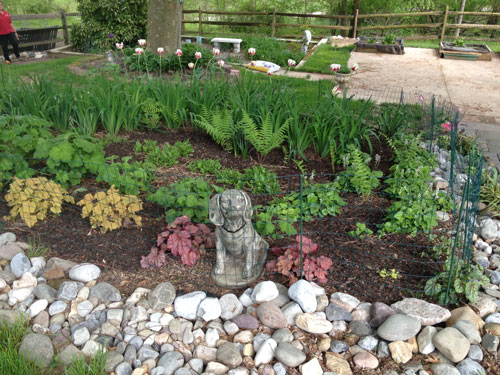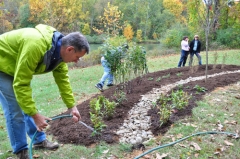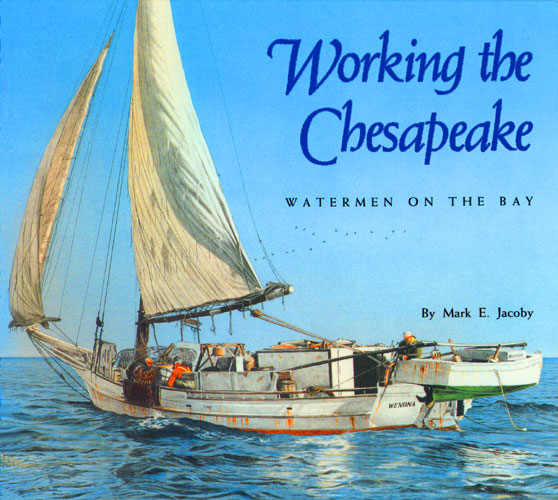Knauss legislative fellowships in Congress help build careers — and they're fun and educational. See our video and fact sheet for details.
Watersheds, People, And Perception: Starting a Dissertation
This past fall marks the first semester that I’ve begun to wholeheartedly flesh out a dissertation. If you’re not familiar with process, you first have to come up with a proposal—a plan that explicitly states your research question, how that research question fits into the field of your expertise, and how you plan to answer that question. At least that is the gist of the process for graduate students in sociology.
Anyone who has gone through the process can tell you how arduous and difficult it can be to find a relevant and practical study to conduct, let alone one that you will still like by the time you have finished the dissertation a year or two later. At the beginning of the semester, I set out to draw up a research plan that would help me answer the question, “How do different individuals and groups make sense of the environment and their place in it?”
Fortunately, this process hasn’t been too troublesome, so far anyway! I am in a unique position, working on a project with Dr. Dana Fisher and Anya M. Galli, director and fellow, respectively, of the Program for Society and the Environment, at the University of Maryland at College Park. The project examines how environmental stewardship groups have an impact on the environment and how effective they are at reaching out to local communities and mobilizing individuals. We aim to deepen our understanding of these processes by studying the Watershed Stewards Academies (WSAs) established in Maryland. These groups train individuals to go out in their own communities to lead environmental restoration projects and educate others about issues concerning the Chesapeake Bay Watershed. (You can read a short description of the WSAs and what they do and view a podcast that interviews a few people involved with the WSAs.)
The WSAs in Maryland present a unique case to learn more about how environmental stewardship groups play a role in mobilizing communities and environmental restoration. Each of the three WSAs act independently, which allows them the flexibility to tailor their organizations as they see fit to train their stewards. Yet each remains fairly uniform in its mission to train stewards to become leaders in their communities.
 |
| A rain garden installed by watershed stewards in Howard County. Credit: Amanda Rockler |
When we began this work, we met individually with the leaders of each WSA and spoke to them about their experiences establishing each WSA and their work with the WSAs currently. While their overarching goals are similar, it was readily apparent that how each academy started, and the challenges each faces moving forward, varied. While we already knew that all three academies have developed in different ways—because they are composed of different community demographics, have made differing partnerships with civic groups and local government, and have different physical locations and geography within the watershed—it was intriguing to listen to them reflect on those differences.
During one of the interviews, one of the leaders went into great detail about their vision for outreach. In their opinion, the academy’s outreach simply had not been effective up to this point because they haven’t figured out how to communicate with everyone, to persuade all residents that each of them is needed when it comes to improving the watershed.
At first, I thought this was a little overstated. But the more I thought about it, the more I became intrigued by the thought process behind the remarks. For example, why would you expect someone who lives in landlocked Howard County to think about the Chesapeake Bay the same way as someone who lives in Anne Arundel County along the Bay’s shores? Or how do you effectively explain to many diverse groups the impacts of stormwater runoff on water quality and how it can be managed? And that’s when it clicked for me, what I wanted to study for my dissertation: How do people make sense of the environment and their place in it? How do the language and actions that people take differ, and how are they the same, across various groups? What is the relationship between how people think about place and their willingness to engage in environmental restoration?
My plan for my dissertation is to build off of the work we are currently doing on the WSAs. Starting with the WSAs, I will trace their individual and organizational linkages—that is, who they work with and who is involved with them—to identify others with similar goals of environmental restoration. Once these groups are identified, I will survey and interview those who would agree to participate in the same way we have worked with the WSAs.
This study would then build into an “arenas” approach. This means I will group people according to their organizational ties, or by social and demographic characteristics, and compare those groups against one another to find areas of overlap and contrast. It is my aim to help answer that question, “How do we communicate to everyone that they are needed to help with watershed restoration?” And I hope to do so by working backward, figuring out how they understand place and their place in environmental restoration.
Photo (top, left): Paul Hlavinka, a watershed steward from Montgomery County, helps install a rain garden. Credit: Amanda Rockler
See all posts to the Fellowship Experiences blog




